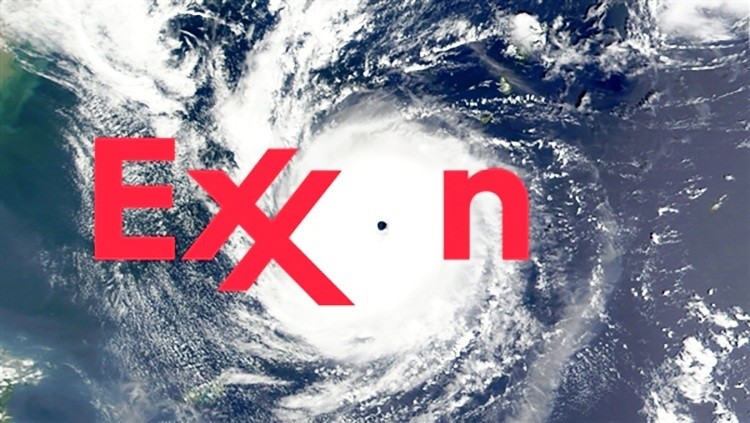
Exxon “Enters No Man’s Land”
The world’s largest listed oil company, Exxon, announced on Friday it was going to have to cut its reported proved reserves by just under a fifth. It is the biggest reserve revision in the history of the oil industry.
Something significant happened on Friday that warrants more than just a few column inches in a newspaper.
With the most divisive Presidential election in US history just days away from concluding, it is easy to understand why more is not being made of the news, but just to tell you something seismic happened on Friday last week.
The world’s largest listed oil company, Exxon, announced that it was going to have to cut its reported proved reserves by just under a fifth – by 19 per cent.
It would be the biggest reserve revision in the history of the oil industry. It is yet another sign that Big oil is in big trouble.
For years people have been warning that Big Oil’s business model was fundamentally flawed and was not only putting the climate at risk, but millions of dollars of shareholders’ money.
For years the industry’s critics warned the industry was ignoring the risks of climate change and was just carrying on drilling regardless.
But the oilmen did what the oilmen do: find oil and gas, no matter the consequences.
And the worst oil company has been Exxon which for decades has denied climate change and the impact that climate change will have on its business.
For decades it could have invested wisely in renewables but it carried on looking for oil and gas – including unconventional oil which is even more carbon intensive than conventional oil. Its critics warned this was pure folly: but the oilmen carried on drilling anyway.
Big Oil is used to doing things its own way.
The warnings have kept coming, but the boys from Exxon didn’t listen. Oil Change International, 350.org, Carbon Tracker and many others in the #keepintheground movement have been saying for years that large swathes of oil reserves must stay in the ground.
They warned that fossil fuel reserves will become “stranded assets”.
Exxon often dismissed its critics as irrelevant lentil-eating, sandal wearing hippies, who wanted to take humanity back to the stone age.
And it carried on drilling. And it dismissed the fact that any of its assets could become stranded.
But then came the Paris Agreement on climate change last December. “With the Paris agreement on climate ratified in December 2015 … no company has more to lose than Exxon,” noted the Chicago Tribune in a great article written last Friday entitled, “Exxon enters no man’s land”:
The Tribune continued: “Big oil companies have been solid investments for years, with a deceptively simple business model: Find at least as much new oil as you sell, book those barrels as future sales, and reinvest in the hunt for new reserves. That made sense as long as oil prices went up, but it locked companies into a vicious cycle of replenishment, leading them to search for ever more extreme, and expensive, sources of crude oil in the Arctic and beneath the oceans.”
And it added: “Cheap oil has stopped that business cold, and the threat of climate action raises fundamental questions about whether it’ll ever be viable again.”
The issue of long term viability has been raised by numerous organisations over the last eighteen months too. Last year the energy watch-dog, the International Energy Agency, argued that two thirds of known reserves would have to stay unburnt, if we are to keep climate change to the limits agreed in Paris.
But Exxon carried on drilling.
Last year Citigroup issued a report warning policies to limit climate change could render vast swaths of oil companies’ reserves worthless, leading to trillions in losses.
But Exxon ignored the warnings.
In May this year, the London-based Chatham House warned in a report, entitled “The Death of the Old Business Model,” that the world’s largest oil companies “faced with the choice of managing a gentle decline by downsizing or risking a rapid collapse by trying to carry on business as usual.”
Importantly, most of Exxon’s de-booked reserves, about 3.6bn barrels, will be at the company’s dirty Kearl oil sands project in Canada. The reduction would account for over three quarters of the reserves. Not only are tar sands very energy intensive, but they are expensive to produce.
In a low oil price, carbon-constrained world, they are stranded assets.
“For the oil sands, this is a tipping point,” argues Andrew Logan, director of the oil and gas program at the ethical investment organisation, Ceres. “Why would any company invest billions of dollars in a new oil-sands project now, given the near certainty that the world will be transitioning away from fossil fuels during the decades it will take for that project to pay back?”
Indeed, two days before Friday’s announcement an article on CNN Money noted just how much trouble the oil giant was in: “Exxon’s stock is down 17% from its 2014 peak amid the crash in oil prices. The oil giant’s profits have plunged to 17-year lows and its once-perfect AAA credit rating has evaporated. ”
It quoted Tom Sanzillo, former deputy comptroller of New York State and now head of finance at the Institute for Energy Economics and Financial Analysis saying the company was in the middle of an “irreversible decline.”
Friday’s announcement is further evidence that we are witnessing the beginning of the end of the oil age.
And the great carbon dinosaur Exxon is slowly dying before our eyes.

